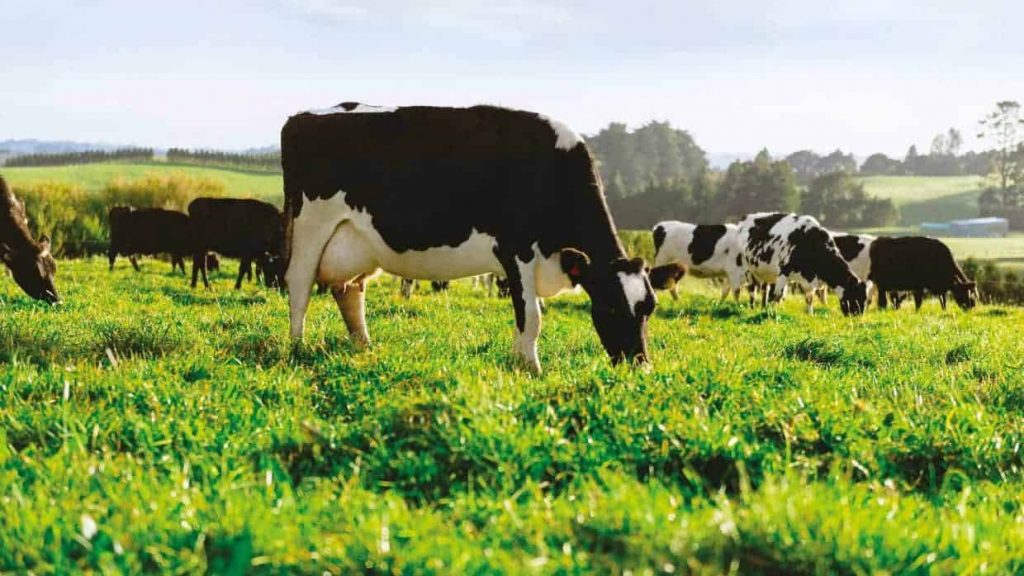
Chinese demand for New Zealand’s key dairy export, whole milk powder, is looking “bleak” for the rest of the year and may not start to recover until next year, according to analysts at HighGround Dairy.
Demand from China, the world’s largest dairy market, has weakened as its local milk production ramped up at the same time as a slowing economy dampened demand. That prompted local processors to dry their milk into powder, resulting in Chinese milk powder imports dropping 30% in the first half of this year.
Whole milk powder prices on the Global Dairy Trade (GDT) auction platform have slid 4.5% this year and are 17% below the same time last year. The price will fall a further 3% at Tuesday’s overnight auction, according to the SGX-NZX futures market.
That’s hurt New Zealand dairy exporters like Fonterra who typically supply between 85% to 95% of China’s whole milk powder imports.
Fonterra has forecast a lower farmgate milk payment for its farmer suppliers this season and agricultural economists are betting it will have to come down further.
The mid-point of its opening forecast for this season of $8 per kilogram of milk solids lags behind last season’s $8.20 per kgMS, with a wide forecast range of between $7.25 and $8.75 per kgMS.
Whole milk powder, which has the biggest impact on farmgate milk prices, last traded at an average US$3100 a tonne on the GDT.
HighGround global dairy consultant Stuart Davison told a webinar that if prices stay around these levels for the whole season it would result in a $7.50 per kgMS milk price. But he sees further downward pressure which could push whole milk powder near US$2800 a tonne in the next three to four auctions.
“There’s a lot of downside to this milk price,” Davison said. “China is definitely the problem for our whole milk powder and the dairy complex as a whole and is unlikely to change in the near term. Whole milk powder prices are likely to keep declining.”
The outlook for weaker prices comes as New Zealand dairy farmers head into their peak “Spring flush” period when most of country’s milk is produced following calving.
“Seasonally, our peak offer volumes come in the next three months, while China deals with a lot of milk,” he said. “We know that their inventories are high at the moment, their consumption of dairy is a bit tight, and their local production is oversupplied as well – they don’t need to be coming to GDT in a hurry.”
Davison expects the market will continue to decline for the rest of this year, hitting the bottom in the first quarter of next year before recovering.
HighGround vice president of global operations and insights, Alyssa Badger, said there are “a lot of red flags” stacking up against an economic recovery in China, which led to an overall bearish landscape for Chinese dairy demand this year and potentially into next year as well.
She noted China’s growing domestic milk market was becoming more efficient and domestic brands were gaining in popularity, helped by an “In China, For China” strategy to make products for their own domestic market.
Reports suggested almost two thirds of Chinese dairy farmers were running at a loss due to a milk glut which had depressed prices, prompting some to slaughter cows to reduce their losses and calls for the Government to intervene to support the fresh milk market.
Badger noted Chinese buyers had not been active on GDT this year, even after price declines.
“They are just not showing up, even at these recent lower values.
“GDT values when adding in freight are essentially at parity with the domestic spot values on offer in China,” she said. “It has just not made sense for China to keep building stocks and it likely won’t unless of course GDT values fall further, and basically plummet here into the New Zealand Spring flush period.”
She noted there was a gap in the data between what New Zealand was exporting to China and what China was importing, suggesting there were unreported stocks sitting at Chinese ports, which didn’t bode well for global dairy markets.
“The overall demand landscape from China is relatively bleak into the rest of the year,” she said.
Badger expects dairy demand in China to pick up again given the country’s growth potential and its low per capita dairy consumption.
“Chinese demand prospects are bleak at present, but we do think it’s temporary and that the long term trajectory for Chinese dairy consumption will point upward,” she said.
However she warns Chinese imports of whole milk powder may have peaked as the country ramps up its own production.
“Whole milk powder imports have likely peaked as their production assets continue to strengthen internally,” she said. “We are expecting a strong shift in Chinese import demand away from whole milk powder and towards other ingredients or finished goods.”

























